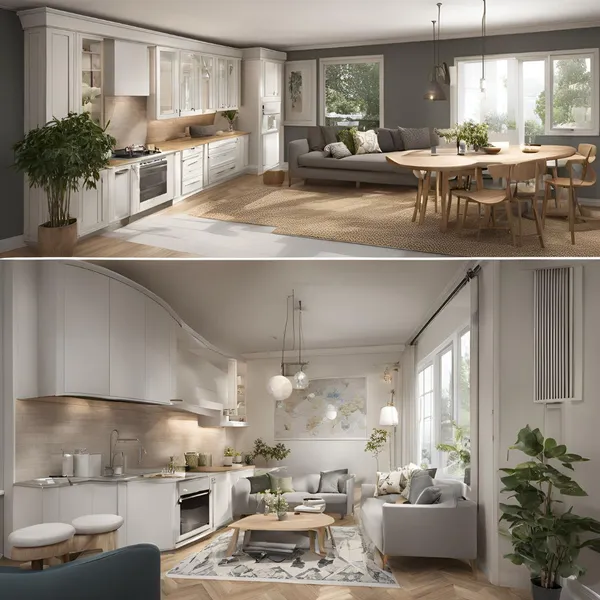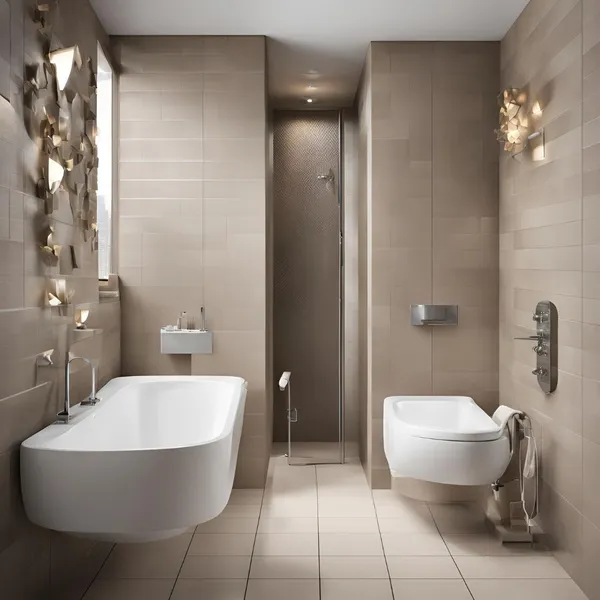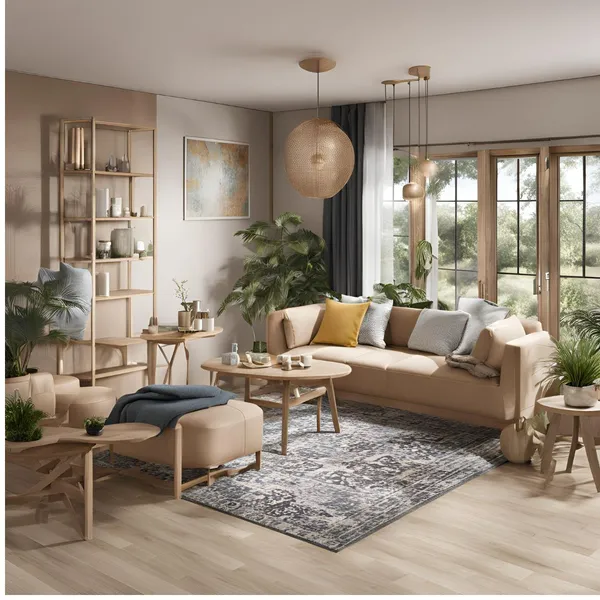Interior Design for the Elderly focuses on making homes more accessible and easy to navigate for seniors.
In the design process, it is more important than ensuring the home is friendly for older adults.
As people grow old, they experience problems like crippled movement or poor sight. If proper care is taken while selecting the design of the houses, these problems can be prevented, enabling seniors to live comfortable, independent lives for most of their lives.
Why is Interior Design for the Elderly Important?
The importance of interior design for older people must be addressed. Several studies point out that the quality of life of a person, especially the elderly, improves from a good design of the environment.
Hence, it is possible to design environments that meet such needs and accommodate use by older people so that they can freely access them and comfortably inhabit the spaces.
The issue of poor design means that something as simple as walking can cause one to fall or slip, especially for older people.
Appropriate choice and arrangement of furnishing and other items used inside homes determine the extent to which such risks can be prevented.
Main Factors to Be Considered When Designing for the Elderly
When designing homes for the elderly, there are several key elements to keep in mind:
1. Safety First
The first consideration when designing a space for seniors is safety. Here are some tips for creating a safe environment:
Non-slip floors:
Select flooring that has good slip-resistant characteristics, such as textured vinyl or carpet tiles. Stairs pose another threat, so avoid using slippery materials such as marble or tile in servers such as bathrooms or kitchens.
Handrails and grab bars:
Place them in the bathtub, shower, around the house entrance, and close to the stairs. Handrails can provide support or keep passersby from falling during such events.
Proper lighting:
Make sure that all the areas in the home are lit adequately. Install lights that switch on when they sense movement in the least used areas like hallways and bathrooms if someone has to move at night.
Clear pathways:
Make sure the paths are clear so that there is no tripping hazard or anybody can easily fall. This one should be easily understandable: Take out any rugs or mats which might be slippery.
2. Accessibility
Another factor is accessibility, which means either the availability of an axis or the ability of a figure to be accessed by an artist. Some seniors use mobility facilities like walkers, wheelchairs, and others; hence, the home needs to be easily accessible.
Wide doorways and hallways:
Ensure that the doors, halls, and other internal paths are large enough to contain a wheelchair or walker. An acceptable width of doors should be greater than 36 inches.
Ramps instead of stairs:
If they use a wheelchair or a walker, offer them ramps instead of stairs when moving up and down or from one floor to another.
Elevated furniture:
Chairs, beds, and furniture should be accessible so seniors can comfortably stand or sit. There are bed types that can be easily adjusted and chairs that supply additional support.
3. Comfort
One of the most critical components affecting elderly people’s health is the sense of comfort. The furniture to be selected for the home and the home’s temperature should reflect their needs.
Ergonomic furniture:
Select the chairs, couches, and beds with good back and neck support. Because of the armrests, these armchairs will enable seniors to sit and rise from the sitting position.
Temperature control:
This is especially true when climate change involves using Elder’s house as the usual heating means, which could be inappropriate as it adapts most to temperature changes: The thermostat must be easily operated, and the house’s insulation has to be correct.
Soft textures:
Introduce soft fabrics and cushions into the home to achieve comfort. Make sure you use comfortable, plump upholstery on your chairs and sofas.
4. Color and Lighting
Colors used in a home can affect the emotions and health of individuals. Small and straightforward can work fine, yet bright and bold should be more engaging but less disturbing with colors.
High contrast:
Thus, the colors should be highly contrasted to make reading more accessible for people with vision problems. For instance, painting brightly colored doors white and making the handles black makes it easier to see and use.
Soft lighting:
You should then install low-glare adjustable lighting to make the environment comfortable. Switch on the dimmers so the room can be lit according to the day’s time.
Natural light:
To complement the lighting in the interior, let as much natural light into the home as possible. Natural lighting can be the large windows or a skylight to improve mood and get the much-needed vitamin D.
5. Adaptable Spaces
In this article, Ozz’s Author outlines that as people age, they develop new needs. Ideally, it is necessary to organize spaces that may be used depending on the situation, i.e., as required.
Modular furniture
Buy furniture that will be mobile enough to be moved around in response to changing needs that may arise in the future. As Nash and Baker note, this allows flexibility as mobility or health changes.
Multifunctional rooms
Purpose – design rooms for multi-utility. For instance, a living room could also be used for purposive such as working from home or even doing therapy exercises.
Easy-to-maintain surfaces
Choose furniture and flooring that can be easily cleaned or that do not retain bacteria or germs; for the kitchen, use laminated countertops and wipeable wallpaper for the rest of the house.
Areas of Focus When Planning Spaces for the Elderly
As much as the entire house should accommodate the elderly, certain rooms may need special consideration.
Kitchen

The kitchen is probably one of the busiest areas in any household, and for the elderly, it simply requires making the space safe and comfortable.
Lower counters: Even though older citizens can work while standing, these should install lower countertops to accommodate seniors who cannot stand or those using wheelchairs.
Easy-to-reach shelves: Instead of using cupboards that may require individuals to bend to reach high shelves or stretch to reach a low shelf, storing food and other kitchen-related wares, such as dishes, should be kept at the ideal waist level.
Touchless faucets: Settle on touchless faucets so elderly people can avoid having to turn water on their hands.
Bathroom

There is another grand area in the house prone to falls; this calls for particular caution when addressing this aspect of the bathroom.
Walk-in showers: A touch-fee shower, especially one with a low access level into the shower, is less of a challenge than a bathtub. It also removes the requirement of negotiating a high edge to work from, which is sometimes unsafe.
Toilet seat risers: Place walking frames beside the bed to ease mobility. Equipment the beds with raised toilet seats to facilitate ease when sitting and towering. There are also safety rails for balance and support and the so-called frictionless walls or zero-gravity beds.
Slip-resistant floors: Always ensure that the bathroom flooring requires a slip-resistant floor. It is recommended that rubber mats or textured tile flooring be used for additional safety reasons.
Bedroom

The bedroom is a room for sleeping; therefore, it is necessary to have more comfort and convenience.
Adjustable beds: Home-care furniture that helps balance body weight can include bed types that can be regulated to help the senior get the most comfortable sleeping position possible, especially those that lift the head or feet of the user.
Nightstands within reach: Make certain nightstands and lamps are positioned within arm’s reach of the bed so seniors do not have to turn in bed or sit up to switch off the lights.
Good quality bedding: Beddings should be soft and breathable and ideally should not require a lot of washing. The fabrics chosen should be memorable, touching the skin without harm since seniors have tender skin.
Living Room

The living room is usually in the center of the home, where families and guests spend most of their time.
Comfortable seating: Minimax factor: The chairs adopted should be comfy yet firm to allow participants to maintain erect postures throughout the event.
Furniture such as sofas or chairs with high backs and armrests provide positive complexities in that users can quickly come in or out of those sitting devices.
Clear pathways: Lastly, check that none of the following obstacles may hinder movement. In this, we ensure that furniture is arranged in the rooms in a manner that allows movement or traffic.
Smart Technology for Seniors
However, bringing innovative technology to a senior’s home will enhance their life in terms of independence.
Smart Lighting
Automatic light control can also be achieved with the help of special motion sensors. The night becomes lighter as the device switches on the light when the person enters the room.
Voice commands can switch on or off light to avoid moving from the couch or coming close to a switch.
Smart Home Assistants
Some voice-activated assistants available for seniors are, for instance, Amazon Alexa or Google Assistant, which may make calls, set reminders, or control other smart devices within the home.
Smart Thermostats
A smart thermostat enables the elderly to control the temperature from their mobile phone or through voice commands.
Conclusion
The Interior design for the elderly focuses on comfort and safety and uses river-free spaces to create an environment that suits the elderly.
As for the factors critical to the senior population’s quality of life, we’d isolate safety, comfort, and flexibility of living space to guarantee the senior’s ability to live independently in their own homes.
That is why considering some aspects of interior design can not only enhance the safety of elderly citizens by avoiding falls but also improve their psychological and emotional conditions.
Thus, it’s possible to design the kitchen, bathroom, bedroom, or even the living room depending on the needs of elderly people.
Using innovative technology, we can improve the quality of their lives and make daily activities more manageable. In conclusion, the goal of the home is just like for any other home, but most importantly, it fosters independence, health, and happiness for many years of the elderly.